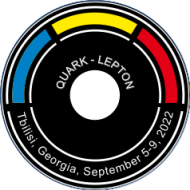Speaker
Description
Double Chooz was a reactor neutrino disappearance experiment operating between 2011 and 2018. Its primary purpose was precisely measuring the neutrino mixing angle $\theta_{13}$. The experimental setup consisted of two identical liquid scintillator detectors at average baselines of about 400 m and 1 km to two nuclear reactor cores in Chooz, France. The neutrinos were detected by measuring the inverse beta decay (IBD) signature, which consists of a prompt positron annihilation and a delayed neutron capture signal. The simultaneous measurement of the neutrino energy spectra with two detectors is used in a Poisson-based likelihood fit to obtain the neutrino mixing angle $\theta_{13}$. Deviations to the reactor neutrino model prediction are incorporated by considering systematic differences in both detector data sets. This technique can extract the infamous spectral distortion observed by all reactor neutrino experiments. This poster explains the extraction method and shows the deviations from the reactor neutrino prediction.
